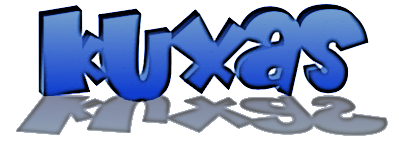Polish is a Slavic language with the unusual feature of using the Latin alphabet. This makes it a good halfway house for someone whose native language also uses the Latin alphabet. A lot of Polish words look very intimidating, with sequences of seemingly unpronounceable consonants. However, the written language is highly phonetic, and once you get to know the sounds of the various letter combinations, pronunciation turns out to be mostly straightforward.
The Polish language is primarily spoken in Poland, where 97% of inhabitants declare it to be their first language. Additionally, several countries of the former USSR eastern bloc have significant minorities whose first language is Polish, most notably Lithuania and Ukraine, making it the most widely spoken Slavic language after Russian.
Polish orthography (i.e. the system of writing) uses the Latin alphabet in combination with a handful of accents. Many of the unaccented letters have similar pronunciations to English. The following table lists the exceptions:
The most common accents are kreska (looks like the acute accent used in French) and ogonek (similar in appearance to the cedilla used in French to make a hard 'C' soft). Ogonek is used on 'A' and 'E', while kreska may appear on 'C', 'N', 'O', 'S', and 'Z'. 'Z' can also appear with a dot over the top, known as a kropka, and 'L' may have a dash through it. Pronunciation as below:
The following guide was taken from
this web site:
| A | A as in father |
| ą | Nasal as the ON in the French BON |
| B | Same as English, except a final B is unvoiced (sounds like P) |
| C | as English TS (even when it begins a word) |
| ć | soft English CH sound |
| D | Same as English (final unvoiced D sounds like T) |
| E | as in pet |
| ę | Nasal, almost like EN in TEN, but, same as e in pet when it is the final letter of a word |
| F | same as English |
| G | Always a hard G as in get (final G is unvoiced as K) |
| H | Same as English |
| I | as the I in machine |
| J | as English Y as in yellow |
| K | as in English |
| L | as in English |
| ł | as English W |
| M | as in English |
| N | as in English |
| ń | as Spanish N/tilde as in English "NI" in onion |
| O | as the O in the English word FOR. NEVER pronounced "OH" as in Ohio |
| ó | as the oo in English FOOT, NOT as as the oo in English BOOT |
| P | as in English |
| Q | There is no Q in the Polish alphabet! |
| R | Roll your R's like Spanish or Scottish |
| S | as English soft SSSS, never as Z |
| ś | soft sh sound |
| T | as in English |
| U | same as O/acute, as the oo in English FOOT, NOT as as the oo in English BOOT |
| V | No V in the Polish alphabet! |
| W | as English V (final V is unvoiced as F) |
| X | No X! Only found in foreign words |
| Y | Always used as a vowel, sounds like the i in IT. NEVER as "eeeee", NOT even at the end of a word. |
| Z | as in English |
| ź | (z with accute accent) soft zh like Zhivago |
| ż | (z with a dot over it) harder zh sound |
| CH | Same as H in English |
| CZ | Hard CH sound as in CHURCH |
| DZ | as in English "reD Zone", but.... |
| DZI | DZ followed by an I is pronounced as J in "Jeep", that's why "Dziekuje" is pronounced "JEN koo yeh" |
| RZ | Same hard zh as Z/dot (do not pronounce the R)(final RZ is unvoiced as SH) |
| SZ | Hard SH sound |
| SZCZ | combination of both as the SHCH in "Fresh cheese" |
There are no articles in Polish (i.e. the or a), nor are there pronouns - except when addressing someone politely, when pan is used for 'you', or pani if you are talking to a woman.

